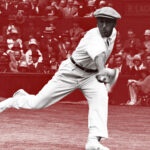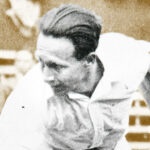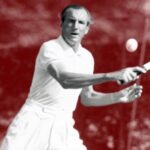From Santana to Lacoste: the 10 GOATs among the lost legends of men’s tennis
Amateurs and professionals, we try to rank the best players who reached the top of the sport before the Open era
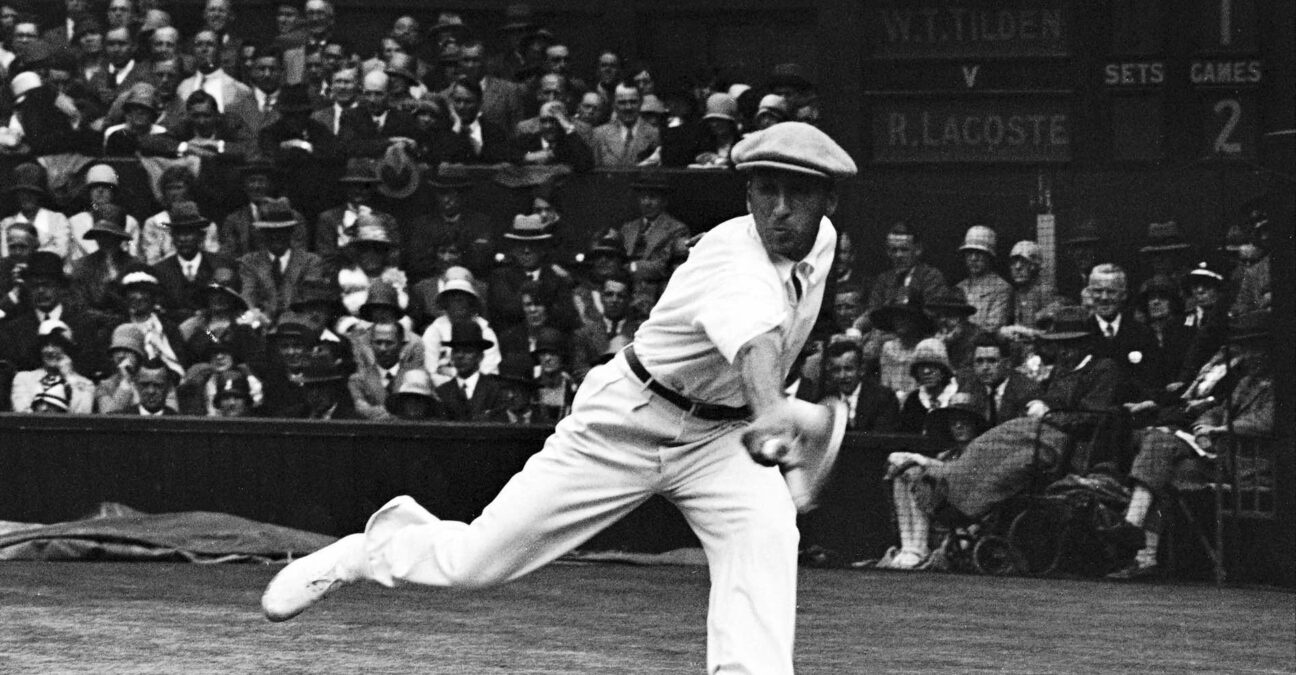 ©AP Photo
©AP Photo
When ranking a list of legends, of course their winning record is important – but that is not the only metric. The figures do not tell the whole story, especially at a time when the separation of amateurs and professionals was blurred. Here we hail the GOATs of the pre-Open era, taking into account their record on the court, but also the charisma and the place in the history books.
So here we pay homage to immense champions of men’s tennis, some of whom have perhaps been unfairly forgotten. Although they have gone, the imprint they left on history is eternal. And of course you’re bound to disagree – let us know your thoughts.
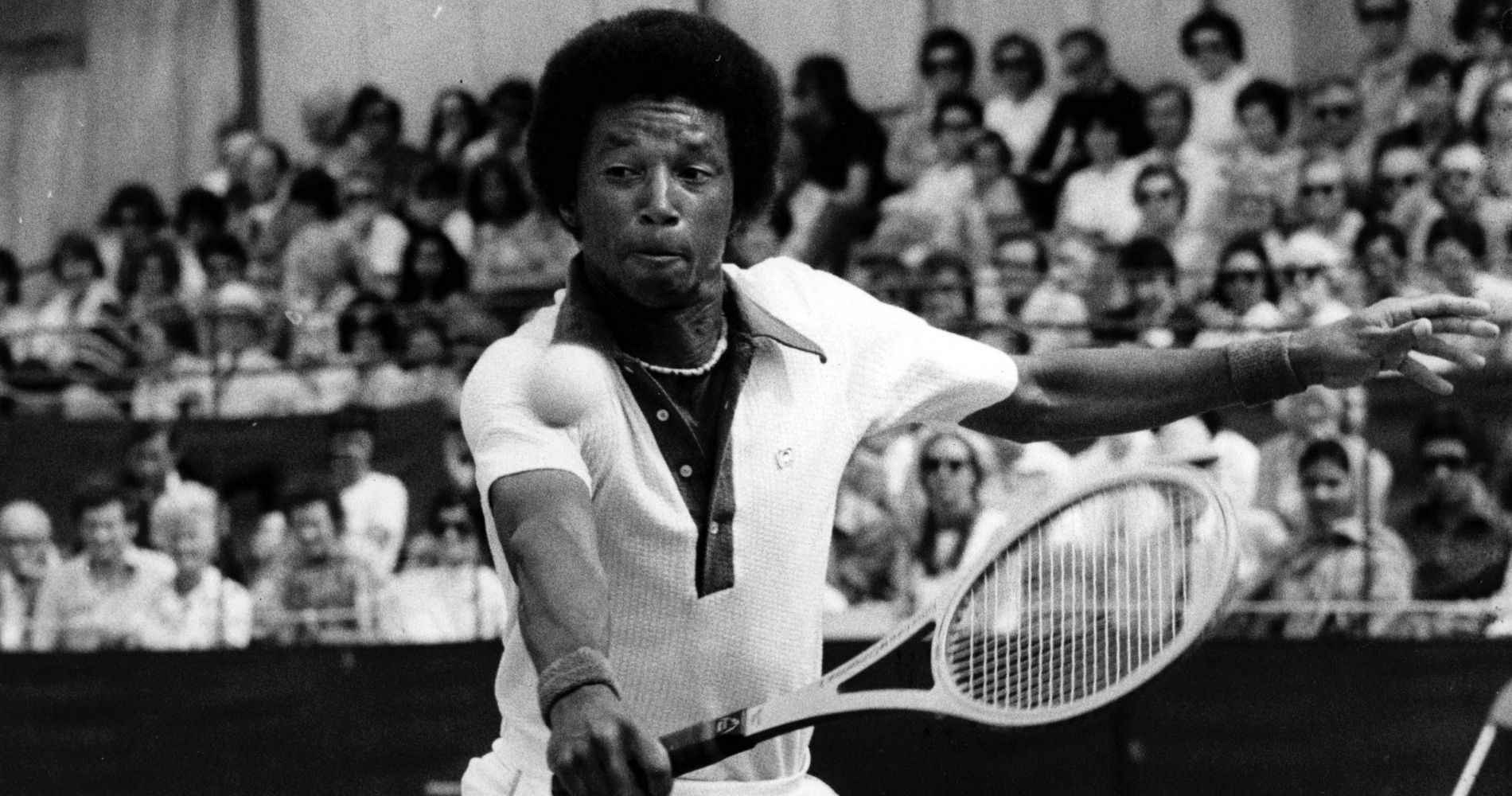
10 – Arthur Ashe, winner and social activist
The American, who died on 6 January 1993 at the age of 49 from AIDS (he contracted the virus during a blood transfusion in 1983), won only three Grand Slam titles (US Open 1968, Australian Open 1970 and Wimbledon 1975), but the mark he left on history goes far beyond his record. It continues to shine today, if only because the world’s largest court, the US Open Centre Court, bears his name.
The first African-American man to win a major title, but also the first to be selected for the Davis Cup – an event he also won twice – Ashe, a man unanimously hailed for his integrity and intelligence, was very involved in social causes. And technically, he also made a great contribution to the game by being one of the first players to use very effectively the jump on serve, back in 1963, popularising the chisel technique.
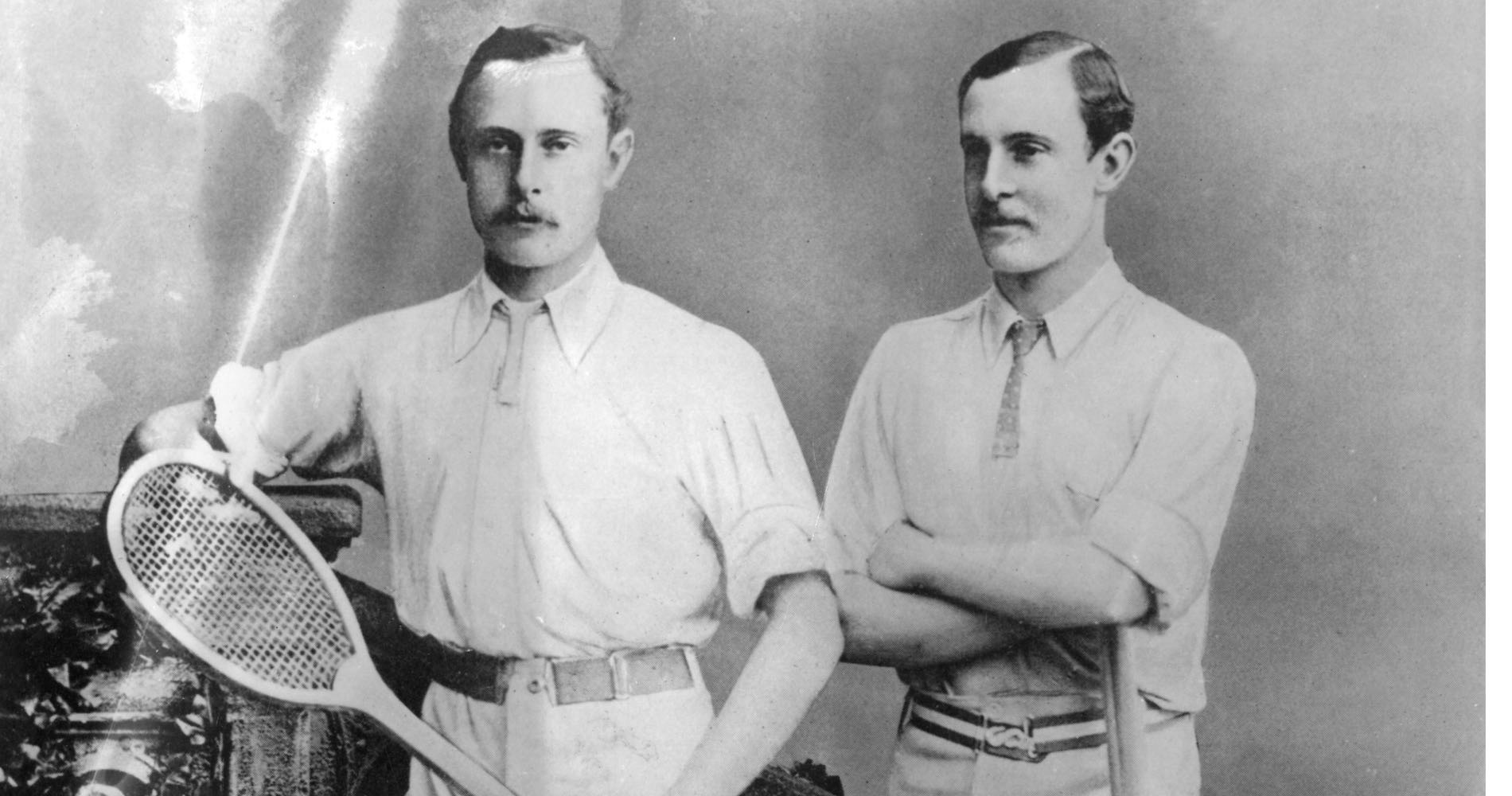
9 – William Renshaw, the man who popularised tennis
Almost at the origins of the game, he triumphed seven times at Wimbledon (12 in all, including the doubles). He remained the record holder for victories for the entire 20th century before Pete Sampras matched him in 2000 and then Roger Federer overtook him in 2017.
What remained unmatched, however, were his six consecutive wins between 1881 and 1886, a record run that was interrupted the following year due to tennis elbow. Then Renshaw won a glorious seventh in 1889 when he qualified for the Challenge Round after an epic match against Harry Barlow, against whom he saved six match points.
But even more than these statistics, what we remember about William Renshaw and his twin brother Ernest (who won Wimbledon in 1888) is the way they gave tennis a huge boost, both technically and in the popular imagination.
William, who died in 1904 at the age of 43 from an epileptic seizure, revolutionised overheads, the smash and, above all, the serve, which before him was just a friendly face-off.
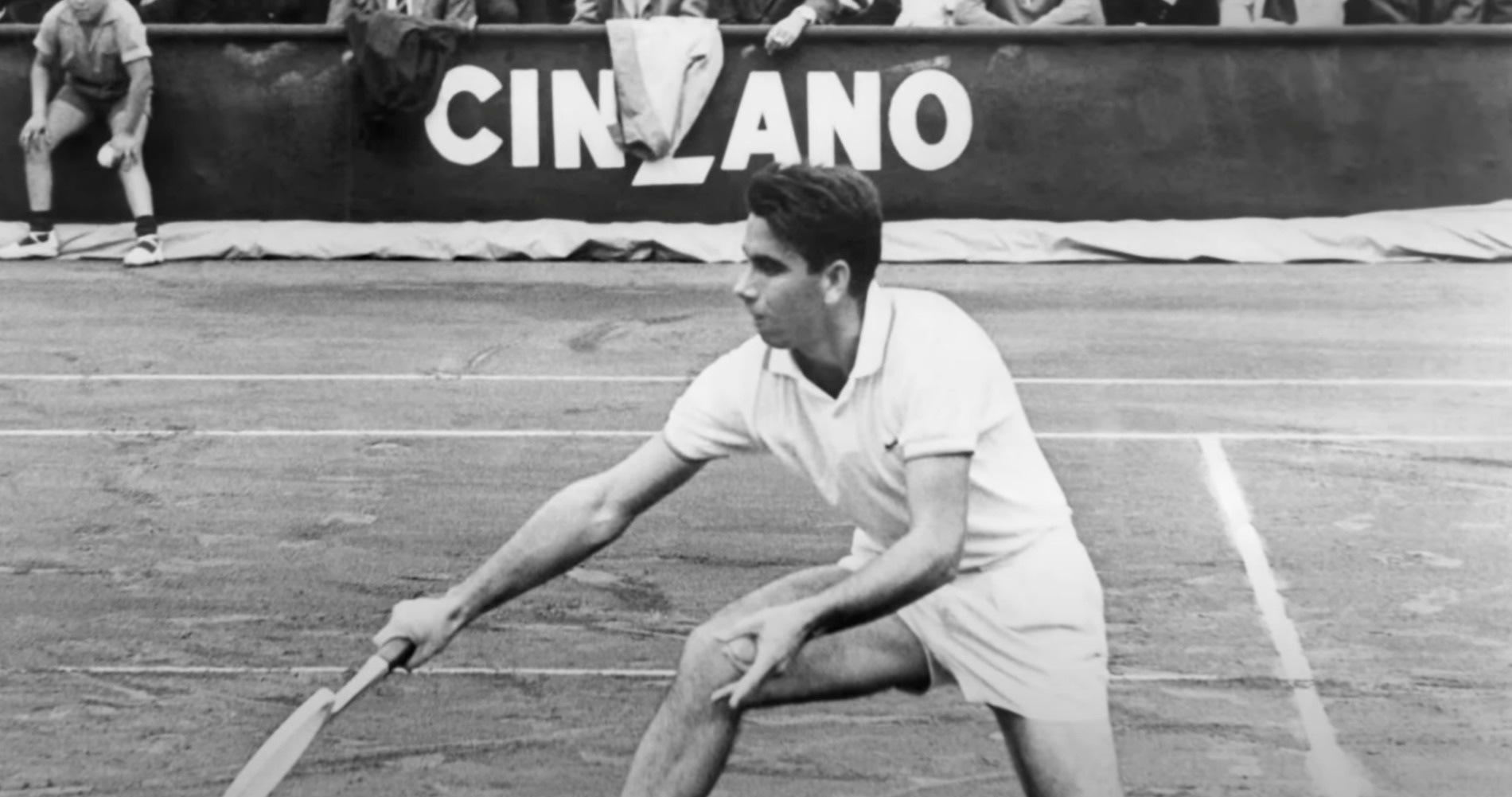
8 – Manolo Santana, Spain’s pioneer
He is the last one to leave us, just recently, on 11 December 2021. His death caused great sadness in Spanish tennis circles, and with good reason: he was a pioneer, the first great Iberian champion in history, with four Grand Slam titles won in the 1960s, at the French Open (1961 and 1964, each time against Pietrangeli), the US Open (1965) and finally at Wimbledon (1966).
The fact that he remained an amateur for most of his career, unlike some of the more famous players of his era (notably the Australians Laver and Rosewall), certainly allowed him to improve his record. But this does not detract from the considerable influence that Manolo, who came from a very modest background, had in Spain, where he became a hero by leading his country to their first two Davis Cup finals in its history, in 1965 and 1967 (lost to Australia).
Renowned for his eye for detail and tactical intelligence, he won 74 titles before becoming the director of the Madrid tournament in 2002, which bears his name. Let’s make no mistake: if it wasn’t for Santana, there probably wouldn’t have been a Nadal either.
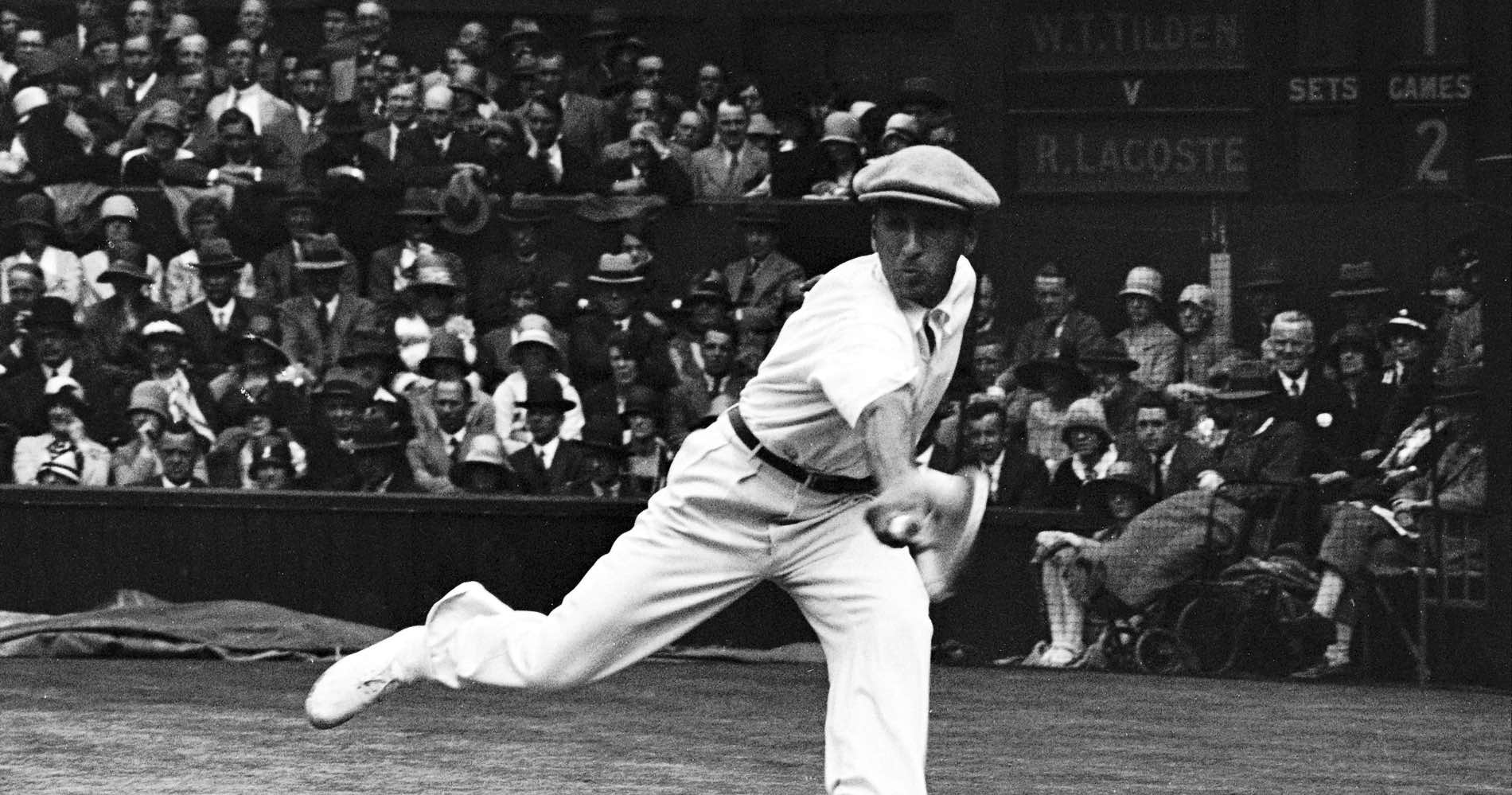
7 – Rene Lacoste, one of France’s most famous exports
Probably the best known French player in the world – his name anyway – because of his eponymous brand, founded at the end of his career in 1933, and topped by the famous crocodile, his nickname.
With seven Grand Slam singles titles to his credit, Lacoste is above all one of the greatest French champions in history, and a distinguished member of the generation of Musketeers with whom he won the first French Davis Cup in 1927 in Philadelphia.
He was not the first Frenchman to win a Grand Slam abroad – Jean Borotra, six years his senior, beat him in five sets in the 1924 Wimbledon final – nor was he the most successful overall (Cochet was ahead of him with eight major titles), but he would have had plenty of time to improve his statistics if he had not had to put a stop to his career at the age of 25 due to recurring health problems.
A brilliant and ingenious man, he then embarked on a successful career as a businessman and inventor. He was responsible for the ball-throwing machine, the dampener and the first steel racquet, the famous T 2000, popularised by Billie Jean King and Jimmy Connors.
He died at the age of 92 in 1996. He was the last living Musketeer.
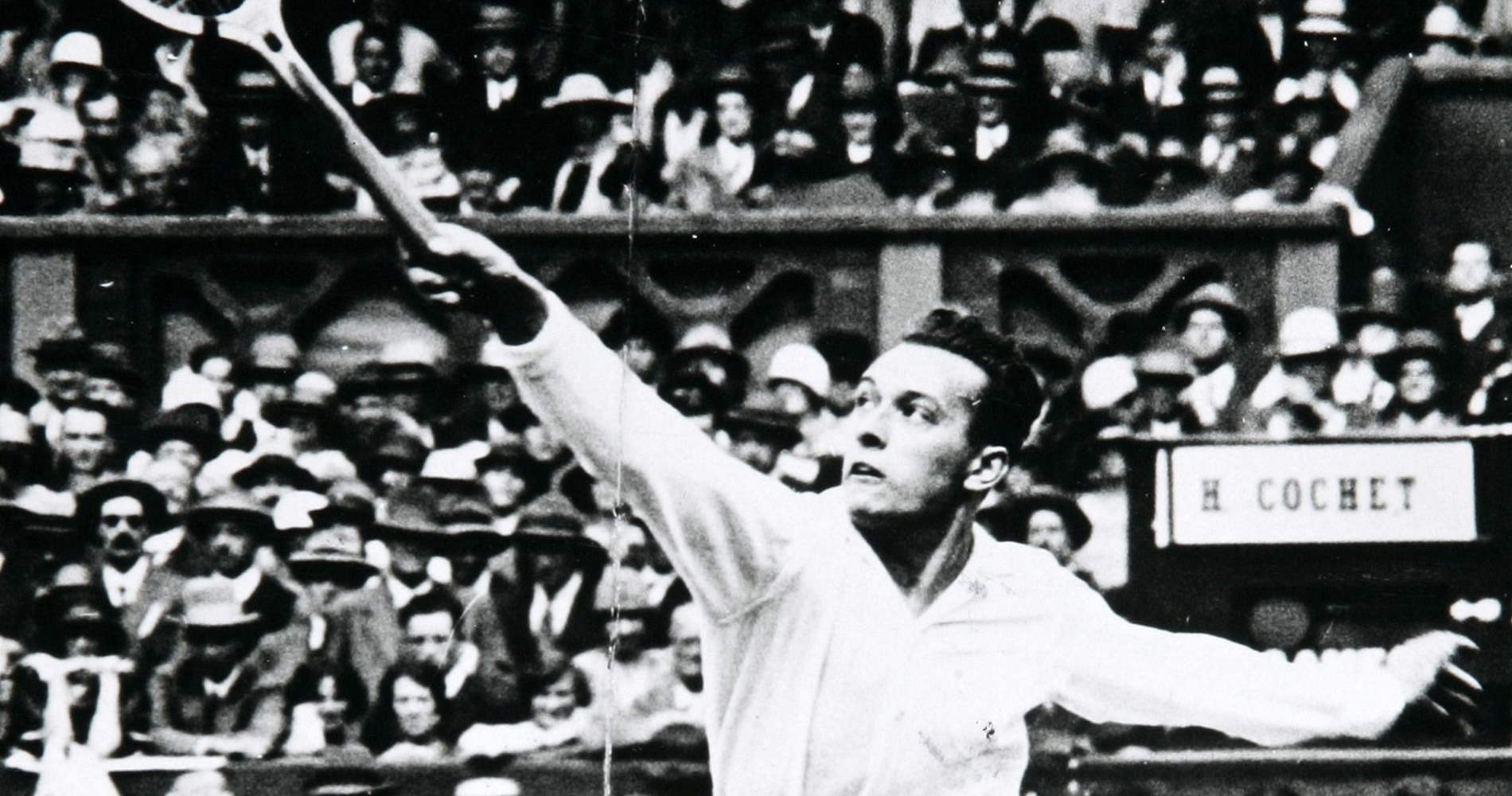
6 – Henri Cochet, “The Magician”
He is the most successful French player in history with eight Grand Slam titles, 15 including the doubles. He is also probably one of the most gifted if we are to believe the testimonies that remain about him, notably this (rare) compliment from one of his great rivals, the American Bill Tilden: “This man plays a kind of tennis that I don’t know.”
Quieter than his buddies from the famous Musketeers, Cochet became a legend in 1927 by winning a great Wimbledon final against Jean Borotra, but also by being the man who won the decisive fifth match (against the American Bill Johnston) to give France the first Davis Cup in their history, in Philadelphia.
From 1927 to 1932, he was part of the six victorious campaigns of this golden generation before turning professional. This is a legendary record, to which must be added his two silver medals won at the 1924 Olympic Games in Paris.
Henri Cochet died at the age of 85, in 1987, in Saint-Germain-en-Laye after a long battle with illness. He had built his reputation on his lightning-fast movements, which earned him the nickname “the Magician” long before Fabrice Santoro or Guillermo Coria.

5 – Fred Perry, the inter-war champion
His name has become famous thanks to his brand with the embroidered laurel, which he created in 1952 at the end of his career in association with the Austrian footballer Tibby Wegner, and which immediately became successful thanks to the invention of the wristbands and short-sleeved polo shirt.
But before that, Fred Perry was above all a great champion, one of the greatest of his time between the two world wars. He won eight major singles titles, all between 1933 and 1936, and was the first person in history to win a career Grand Slam. He was also the first to win a half-Slam, in 1934, winning in Australia and at Wimbledon over Jack Kramer, one of his great rivals along with the German Gottfried Von Cramm.
During this fantastic period 1933-1936, he also led his country, Great Britain, to four Davis Cup victories.
Tall, strong, with a formidable serve and backhand, Perry had the distinction of having been a top-level table tennis player before switching to tennis. He died in 1995 at the age of 85. But his legacy is indelible.

4 – Pancho Gonzales, legendary on and off the court
He is the least successful player on this list with two “minor” US Opens won in 1948 and 1949, at the age of 20 and 21. But that doesn’t say anything about the player he was: immense, one of the greatest of all time according to many experts who had the privilege of watching him play (or even competing against him) at the height of his glory, in the 1950s and 1960s.
If Gonzales did not win more major titles, it was simply because he was a professional for most of his career, popularising tours promoted by his compatriot (and rival) Jack Kramer. Including these tours, the Mexican-American has more than 100 titles to his name.
When the Open Era was signed into being in 1968, allowing the return of the pros to the Grand Slams, Gonzales was already 40 years old, which did not prevent him from reaching the semi-finals at the French Open that year or from winning a mythically brilliant match against Charlie Pasarell at Wimbledon the following year.
Tall (he was nearly 6’2″), as powerful as a bear and as agile as a cat, Gonzales also had a massive reputation when it came to his dissolute personal life: he was married six times, twice to the same woman (actress Madelyn Darrow) and once to Andre Agassi’s older sister Rita.
He died in Agassi’s town of Las Vegas in 1995. He was 67 years old.
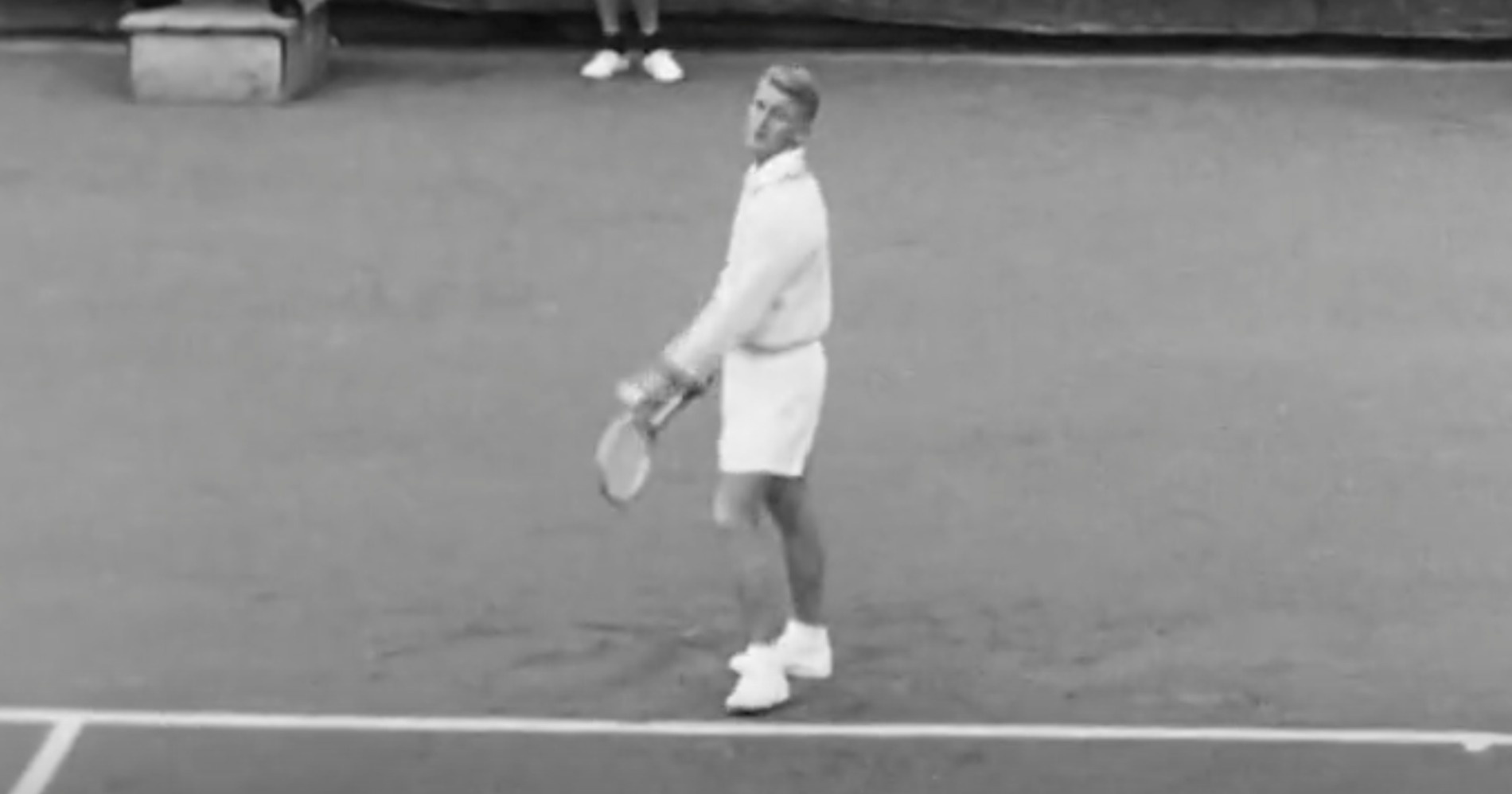
3 – Lewis Hoad, the Aussie Apollo
Just like Pancho Gonzales, whose rival he was on the professional tours organised by Jack Kramer, he did not have a record to match his formidable talent: however, he still had four Grand Slam titles, three of which came in a formidable 1956 season in which he won the first three major tournaments before falling to his compatriot Ken Rosewall in the final of the US Open.
This tall blond man with the physique of an Apollo and almost animal strength was perhaps the best of that glorious Australian generation that was to dominate the world in the middle of the 20th century: Laver, Rosewall and others. Pancho Gonzales, not necessarily the humblest of men, once said of him: “He is the only player who, even if I am having a good day, can still beat me. His game is the best of all time.”
But Lew Hoad, who won four Davis Cups before turning pro at the age of 23 after a second Wimbledon title in 1957, had his career disrupted by recurring back problems.
He died of leukaemia in 1994 in Spain, where he had settled and where he had been Davis Cup coach.

2 – Don Budge, the first man to complete a Grand Slam
Don Budge’s record includes six major titles: and he achieved the historically unique feat of winning them consecutively, from Wimbledon 1937 to the 1938 US Open.
As you can see, this includes a calendar Grand Slam in 1938, the first in tennis history. The term “Grand Slam”, which originated in bridge, was invented or rather adapted for him by the New York Times journalist Allison Danzig, who was the first to write it in one of her articles.
Beyond this historic performance, after which he turned professional, the American built his reputation on his backhand, which was amazingly powerful at a time when this stroke consisted essentially of putting the ball back into play. He benefited from great height (1.85 m) and agile movement. He died in 2000, at the age of 84, one month after a car accident that left him very weak.
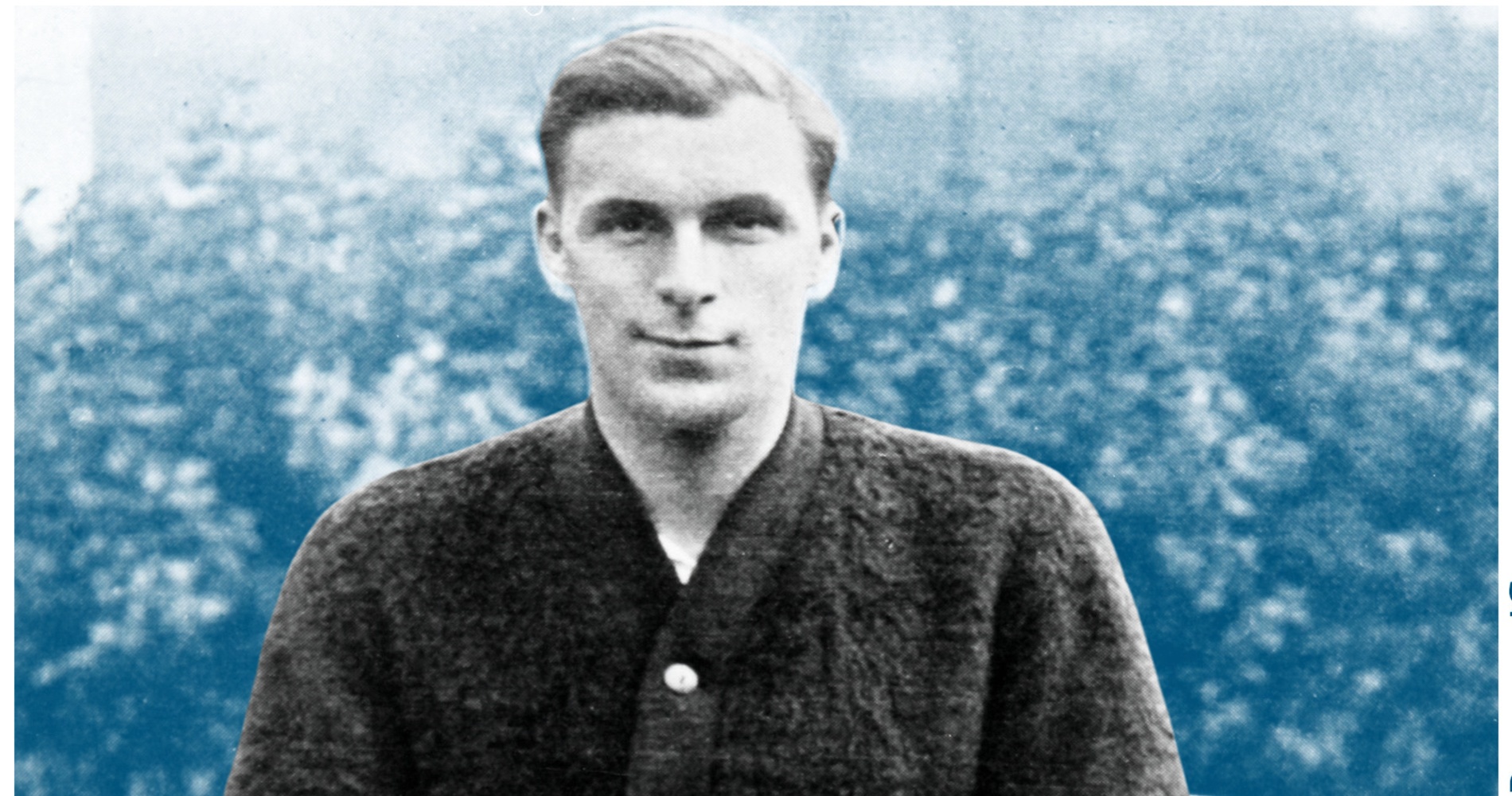
1 – Bill Tilden, with talent, charisma and celebrity
He is the most successful male player of the pre-Open era, with an estimated 138 titles, including 10 Grand Slams. The American won the US Open seven times (plus Wimbledon three times), a tournament in which he is still the joint record-holder for singles victories (equal with his compatriots Richard Sears and Bill Larned) and the only holder of the absolute record for victories (16), including doubles and mixed.
Until the Big Three, no player has probably dominated an entire decade with his talent, charisma and celebrity as he did in the 1920s. He may have asserted himself late in life (he was born in 1893) but it came after a long time working on his once-weak backhand.
But Tilden’s fame came from his service. Nicknamed “Cannon Ball”, he was the first, from the height of his (almost) 1.90 m, to turn this shot into a lethal weapon.
In fact, Tilden was the first to breathe tennis through every pore of his skin, spending hours reflecting on his sport and writing two books, including the famous quote: “Tennis is more than a sport: it is an art, just like dancing.”
Openly gay (not easy at the time), showman, comedian, and troublemaker, Tilden revolutionised the image of his sport and developed successful professional tours, where he showed an impressive longevity, playing until the end of his life. He died in 1953, at the age of 60, from a heart attack.
By then, Tilden had already fallen into his darker side, ruined and, above all, twice sentenced to prison for sexual activity with minors. The man, cerebral and tortured, must be separated from the player, who was immense.

